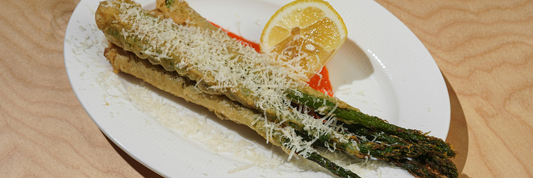The debate over paper straws vs plastic straws has become a focal point in the fight against plastic pollution. Straws symbolize a larger issue regarding the need for sustainable alternatives in everyday life. As consumers and environmental advocates highlight the impact of single-use plastics, the choice between paper and plastic straws reflects a business's commitment to sustainability. This guide explores the differences, benefits, and drawbacks of each option to help you make an informed decision for your business.
- Paper vs Biodegradable Straws: Pros, Cons, and Environmental Impact
- 4 Things About Recycled Paper Straws that Coffee Shop Should Know
- Compostable Straws vs Plastic Straws: Which One Should You Use in 2025?
Why the Straw Debate Matters

Straws have emerged as a focal point in the ongoing battle against plastic pollution. As we navigate through the impacts of single-use plastics on our environment, straws symbolize a larger issue: the need for sustainable alternatives in everyday life.
Many consumers and environmental advocates see straws as a clear example of disposable plastic waste that contributes significantly to ocean pollution. Iconic images of marine life suffering due to plastic waste have sparked a movement, making straws a key talking point in discussions about reducing plastic use.
For food and beverage (F&B) businesses, the choice between paper and plastic straws can reflect their commitment to sustainability. Consumers are increasingly favoring brands that take active steps to reduce their environmental footprint. The transition away from plastic straws doesn’t just signify a change in product; it is also a reflection of a company’s values and responsibility toward the planet.
The landscape of business practices is currently evolving as more jurisdictions implement single-use plastic bans. Canada is taking a front-row seat in this transformation, with various provinces leading the charge. These regulations are pushing businesses to rethink their operations and explore eco-friendly alternatives, driving a shift that is echoed globally.
Paper vs Plastic Straw – What’s the Difference?
What Are Plastic Straws?
Plastic straws are primarily made from polypropylene, a thermoplastic polymer that is both inexpensive and durable. This material allows straws to maintain their form and functionality, making them a staple in restaurants and cafes.
However, the long-term implications of plastic usage are concerning. Plastic straws are non-biodegradable, meaning that they can persist in the environment for hundreds of years. The accumulation of plastic waste contributes significantly to global pollution levels, affecting wildlife and ecosystems. According to the Ocean Conservancy, millions of straws pollute our oceans each year, exemplifying why a change is necessary.

What Are Paper Straws?
Unlike their plastic counterparts, paper straws are typically made from kraft or FSC-certified paper, often sealed with a food-safe adhesive. This construction offers a more sustainable option since paper straws are biodegradable and compostable.
In an environment-conscious world, using paper straws aligns well with eco-friendly practices. They break down more quickly than plastic, thus minimizing their impact on landfills. Additionally, many paper straws are made from recycled materials or sourced from sustainable forestry, making them not only eco-friendly but also a proactive choice for businesses looking to highlight their commitment to sustainability.
The usability of paper straws has also improved over the years, with advancements leading to stronger and more durable options that can withstand various beverages without losing their integrity too quickly. Yet, businesses may need to explore various suppliers to ensure they select high-quality paper straws that meet their needs.
Ultimately, the conversation around paper vs plastic straws embodies a significant shift in consumer behavior and business practices. As more people recognize the impact of single-use plastics on the environment, choosing sustainable alternatives becomes even more critical.

Paper Straws vs Plastic Straws – Environmental Impact
The debate over the environmental impact of paper straws versus plastic straws continues to gain momentum, particularly as consumers become more aware of the implications their choices have on the planet.
Lifecycle Comparison
- Plastic straws can last over 200 years in the environment, contributing significantly to plastic pollution.
- In contrast, paper straws can decompose within weeks, making them a more environmentally friendly option.
Impacts on Marine Life, Soil Quality, Food Chain
The environmental effects extend to marine life and ecosystems:
- Marine Life: Plastic straws pose a serious threat to ocean animals. Turtles, birds, and other marine creatures often mistake plastics for food, leading to ingestion that results in injury or death.
- Soil Quality: As plastic breaks down into microplastics, it contaminates soil where it can enter the food chain, affecting humans and wildlife alike.
- Food Chain: Chemicals from plastic and polluted marine ecosystems can accumulate, disrupting food chains and leading to health risks for higher trophic level species.
Recent legislative changes, such as Canada’s plastic ban, further reflect the changing attitudes toward single-use plastics, highlighting the rising demand for sustainable straw alternatives.
Performance Comparison – Customer Experience & Usage

Paper Straws
While paper straws have gained popularity for their environmental benefits, they do have limitations:
- They tend to soften after 20 to 30 minutes, which makes them unsuitable for prolonged exposure to hot drinks.
- Many businesses appreciate that paper straws can be printed on, allowing for branding opportunities that enhance a brand's eco-friendly image.
- However, some customers report dissatisfaction with the mouthfeel, which can detract from the overall drinking experience.
Plastic Straws
Plastic straws have long been the standard for many establishments due to their performance characteristics:
- Known for their long-lasting durability and familiar texture, they enhance the drinking experience for many consumers.
- However, their inability to decompose has led many regions to implement bans, placing them in direct conflict with environmental considerations.
Paper vs Plastic Straws Cost – Which Is More Economical?

When analyzing the costs associated with paper and plastic straws, several factors come into play.
- Unit Cost: Generally, plastic straws are cheaper to produce and purchase, making them a more economical choice upfront.
- Production Costs: Paper straws often require more layers for durability, leading to higher production costs compared to single-layer plastic.
- Hidden Costs: Long-term brand image and the expense of managing plastic waste significantly contribute to the overall economic impact, making sustainability a worthier investment.
Are Paper Straws Cheaper Than Plastic?

In a direct comparison:
- Cost: Paper straws are typically 20-50% more expensive than their plastic counterparts.
- Regulatory Compliance: They do offer a pathway to comply with increasingly stringent regulations while enhancing brand value in the eyes of environmentally conscious consumers.
- Market Dynamics: With the growing competition and demand for eco-friendly products, prices for paper straws are gradually decreasing.
Summary Table – Side-by-Side Comparison

|
Criteria |
Paper Straws |
Plastic Straws |
|
Biodegradability |
Yes |
No |
|
Reusability |
One-time |
One-time |
|
Durability |
Softer |
Durable |
|
Customer Experience |
Mixed |
Familiar |
|
Environmental Impact |
Low |
High |
|
Legal Compliance |
Allowed in Canada |
Banned |
|
Custom Branding |
Easy |
Limited |
Which Straw Is Better for Your Business?
Choose Paper Straws If:
- Your business needs to comply with plastic bans.
- You aim to present a green brand image that attracts environmentally conscious customers.
- You serve cold drinks, takeaways, or host short events, where the singleness of usage isn’t a limitation.
Plastic May Still Apply For:
- Specific medical exemptions or in geographical areas without plastic bans.
- Situations requiring long-duration usage or thicker beverages.
Conclusion
The choice between paper and plastic straws extends beyond mere cost or durability; it reflects your commitment to environmental responsibility and the values of your brand. Transitioning to eco-friendly straws can be a viable strategy for those looking to align with sustainable practices. Partnering with trusted suppliers like KimEcopak can ensure that your business makes this transition smoothly and professionally.




